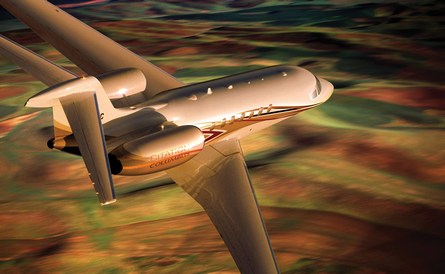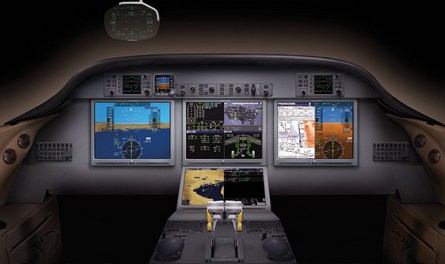Spirit AeroSystems has been selected to produce the fuselage and empennage of Cessna's new large-cabin business jet, the intercontinental-range Model 850 Citation Columbus.
Details of the new aircraft were unveiled in Washington, DC on 6 February. Cessna's largest and most expensive Citation yet, the Columbus will cost $780 million to develop and sell for an expected $27 million in 2008 dollars.
Size, price and range make the Columbus a competitor for the Bombardier Challenger 605 and Dassault Falcon 2000 large-cabin business jets, and leapfrog Cessna over the Challenger 300 and other super mid-size jets.
(Click here to see how the Columbus compares with its rivals)

© Cessna
The result of five years spent studying the market for a larger, longer-range aircraft, "the Citation Columbus is being designed to be the best value proposition in its class", says Cessna chief executive Jack Pelton.
First flight is scheduled for 2011, says the manufacturer, leading to US certification in 2013 and entry into service in 2014. Like previous Citations, the Columbus will have an all-metal airframe.
The twinjet will be powered by new Pratt & Whitney Canada PW810 turbofans, each producing 8,830lb of thrust, and equipped with Rockwell Collins Pro Line Fusion integrated avionics, including four 380mm (15in) liquid-crystal cockpit displays.

© Cessna
The Columbus has a target range of 4,000nm (7,400km) at Mach 0.80 with eight passengers. This compares with the Challenger 605's range of 4,045nm at M0.74 with five passengers and the Falcon 2000EX's 3,800nm at M0.80 with six passengers.
Cessna says the aircraft will have a maximum cruise speed of Mach 0.85, beating the Challenger 605's Mach 0.82. At the same time, the Columbus is expected to take off in 1,650m (5,400ft) at its maximum weight, compared with 1,780m for the Canadian aircraft.

© Cessna
At 11.1m (36.3ft), the cabin is the longest in its class, says Cessna, beating the Challenger 605 at 8.66m and Falcon 2000 at 8.02m . At 1.85m, cabin height is the same as in the Challenger and 50mm less than in the Falcon. The Columbus will seat up to 10 passengers.
The first in P&WC's PW800 family of engines producing up to 10,000lb thrust, Cessna says the PW810 will beat international emissions standards by 50% for nitrous oxide and 35% for carbon monoxide. Noise levels will be "well below" Stage 4.
In addition to the largest displays available, the Columbus cockpit will feature synthetic-enhanced vision, autothrottle and optional head-up display. The aircraft will be equipped with Collins' MultiScan weather radar, with optional predictive windshear.

© Cessna
The GPS-based flight management system will support WAAS precision approaches and RNP airspace procedures, says Cessna, while the traffic surveillance system will have ADS-B capability. Controller-pilot datalink is an option.
Joining a business-jet family currently comprising nine Citation models from the $2.5 million very-light Mustang to the $20.1 million high-speed Citation X, the Columbus "provides a perfect platform at the top end of our product line for customers looking for more space, more range, more economy and more capability", says Cessna chief executive Jack Pelton.
Source: FlightGlobal.com
















